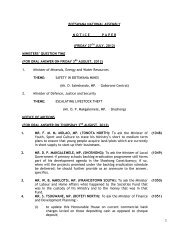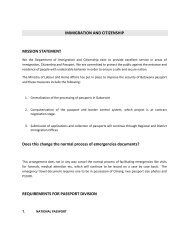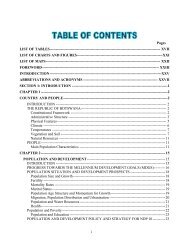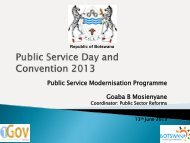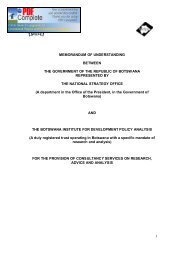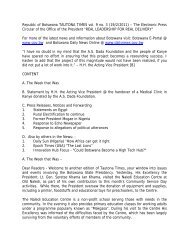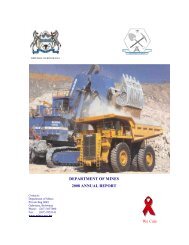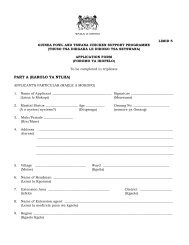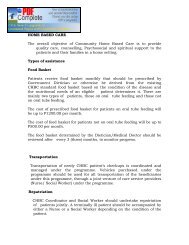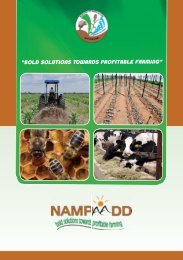Roads Department - Government of Botswana
Roads Department - Government of Botswana
Roads Department - Government of Botswana
Create successful ePaper yourself
Turn your PDF publications into a flip-book with our unique Google optimized e-Paper software.
<strong>Roads</strong> <strong>Department</strong><br />
tion <strong>of</strong> salt content are described together with an introduction to interpretation,<br />
comparison and presentation <strong>of</strong> test results.<br />
Chapters 4 and 5 (Risk Evaluation and Design <strong>of</strong> Preventative Measures).<br />
A sequential procedure for assessment <strong>of</strong> the likelihood <strong>of</strong> damage occurring is<br />
provided in chapter 4. The risk depends on climate, materials and salt contents<br />
for a particular project. Once it is established that there is a high probability<br />
that salt damage will occur, the preventative measures to be considered are also<br />
detailed in chapter 5.<br />
Chapter 6 (Repair <strong>of</strong> Damaged Surfacing).<br />
This chapter provides currently used methods for repair <strong>of</strong> damaged surfacings,<br />
both for temporary and permanent surfacings.<br />
Chapter 7 (Summary).<br />
This chapter includes the summary. The list <strong>of</strong> References and Appendices are<br />
given at the end <strong>of</strong> this chapter.<br />
Details <strong>of</strong> international practise and salt limits are at Appendix A and is<br />
intended only as background literature. Appendix B details methodology for<br />
salt content analysis using the Electrical conductivity whilst Appendix C provides<br />
an example <strong>of</strong> risk evaluation and worked example for selection <strong>of</strong> preventative<br />
measures for a given project following the procedures described in<br />
chapters 4 and 5 <strong>of</strong> this guideline. Appendix D contains a glossary <strong>of</strong> terms to<br />
assist the reader. Appendix E contains a list <strong>of</strong> abbreviations.<br />
The general layout <strong>of</strong> the guideline is shown in the flowchart below.<br />
1. Introduction 2. Occurrence<br />
and characteris-<br />
3. Testing for Salt<br />
and Interpretation<br />
4. Risk<br />
Evaluation<br />
5. Damage Prevention<br />
methods<br />
Field<br />
Laboratory<br />
Materials<br />
Climate<br />
Subgrade<br />
6. Repair<br />
techniques<br />
Figure 1.1 Flowchart <strong>of</strong> guideline.<br />
7. Summary<br />
10 Chapter 1<br />
Guide to the Prevention and Repair <strong>of</strong> Salt Damage to <strong>Roads</strong> and Runways<br />
Introduction



